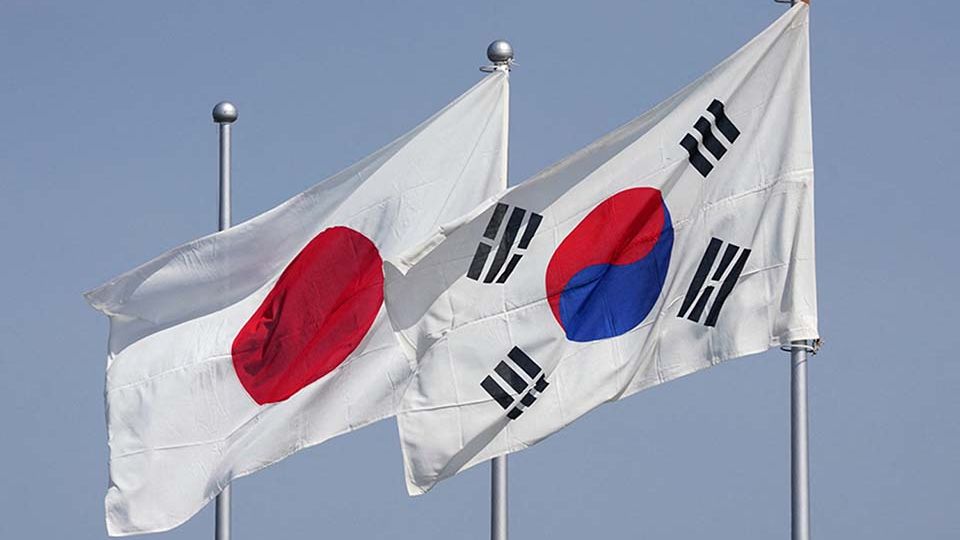October 10, 2025
SEOUL – The notion of a South Korea–Japan Economic Community may sound utopian — an idea fit only for idealists. Given the deep scars of Japan’s colonial rule over the Korean Peninsula and unresolved territorial disputes, most observers would dismiss the concept as naive or politically impossible. Yet one of Korea’s most influential business leaders, SK Group Chair Chey Tae-won, has long argued that deeper integration between the two economies is not only desirable, but necessary to survive the growing wave of global protectionism.
At first glance, Chey’s proposal may seem overly ambitious. But economically, his argument carries weight.
If South Korea and Japan were to integrate their economies in some form, their combined gross domestic product would reach roughly $7 trillion — placing the bloc behind only the United States, the European Union and China. Together they would account for about 5 percent of global output. Such economic scale would give them significant bargaining leverage in negotiations with the US, China and other major powers. In an era marked by tariff threats and unilateral trade measures, acting in tandem may offer better protection than going it alone. “This is the age of trade protectionism,” Chey remarked in a recent interview. “Given our shared geopolitical situation, Japan is the only country that can share the effects of cooperation.”
The industrial complementarities between the two countries are another compelling factor. South Korea leads in semiconductors, batteries, displays and shipbuilding, while Japan holds strengths in advanced materials, components and precision machinery. A joint economic framework could create greater efficiency across industries and reduce duplication. Lowering trade barriers and easing regulations would expand market access and streamline production networks. A combined economic bloc would also diversify and reinforce supply chains, lessening dependence on China and Western markets while increasing resilience in moments of global shock. Joint investment in research and development — particularly in artificial intelligence, quantum computing and next-generation manufacturing — could also reduce costs, accelerate innovation and speed up commercialization.
Still, the obstacles to such a community are formidable. Dormant historical tensions related to wartime issues and territorial claims could easily reemerge. Political leaders in both capitals would risk significant domestic criticism if they appeared too conciliatory. Labor groups and strategic industries could resist integration if they feared job losses or competitive disadvantages. Despite complementarities, South Korea and Japan remain direct competitors in key sectors such as automobiles and electronics.
Prior experience offers little encouragement. In 2019, tensions between Seoul and Tokyo plunged to their lowest point since diplomatic normalization in 1965. What began as a dispute over historical justice soon spiraled into trade and security retaliation. South Koreans launched a widespread “No Japan” campaign, boycotting Japanese products and canceling travel plans en masse.
Relations have since improved. Under the previous Yoon Seok Yul administration, Seoul took major steps toward reconciliation, partly nudged by Washington’s desire for trilateral cooperation among the US, South Korea and Japan. The current administration of Lee Jae Myung, despite initial fears that his nationalist leanings would reverse course, has largely maintained the engagement trajectory. High-level diplomacy has resumed, summit exchanges have become routine and trade and tourism between the two countries have returned to — and in some cases exceeded — pre-2019 levels.
Against this backdrop, Chey has revived his call for an ambitious economic partnership. He often cites the example of France and Germany — longtime adversaries who helped create and sustain the European Union despite centuries of enmity. “The conflict between Germany and France was worse than that between Korea and Japan, yet they managed to move past it,” he has said.
Still, the European Union is not a model without complications. Nearly 75 years after its early steps toward integration, it faces ongoing tensions over sovereignty, fiscal policy and social norms. A fully unified Korea-Japan economic community is perhaps unwise to pursue in a single leap. A more practical path might resemble the phased approach of the Association of Southeast Asian Nations bloc that emphasizes limited but achievable cooperation without demanding deep political integration.
Whatever form such a community takes, closer economic coordination between South Korea and Japan would likely strengthen both nations in a world where protectionism, economic nationalism and supply chain disruptions are becoming the norm. The biggest question is political will. Leaders in both countries face electorates sensitive to historical grievances and wary of perceived concessions. President Lee has, in principle, supported cooperation with Japan on economic matters, but his stance could shift if Japan’s next prime minister — Sanae Takaichi, known for her nationalistic rhetoric — reverts to more hard-line positions.
For now, Chey’s vision hangs in the balance. Whether it evolves into a phased partnership, a treaty mechanism or merely remains a provocative thought experiment will depend on how leaders in Seoul and Tokyo navigate domestic pressures and geopolitical realities.
If political courage matches economic logic, the idea could eventually gain traction. If not, it will remain a daring dream, perhaps ahead of its time, but not entirely detached from the possibilities of tomorrow.
Lee Byung-jong is a former Seoul correspondent for Newsweek, The Associated Press and Bloomberg News. He is a professor at the School of Global Service at Sookmyung Women’s University in Seoul. The views expressed here are the writer’s own. — Ed.


